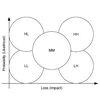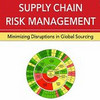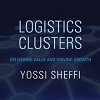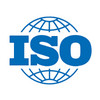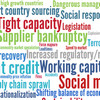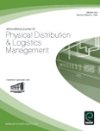 How do you prepare a supply chain for a crisis, and how do you manage a supply chain when the unexpected hits you? While not providing a direct answer to this question, a group of researchers from the Texas A&M University, has scoured some 118 peer-reviewed and published articles and come up a classification scheme I think is excellent. In Managing supply chains in times of crisis: a review of literature and insights, the three, Arunachalam Narayanan, Ismail Capar and Malini Natarajarathinam use 5 factors and 15 subfactors to separate the chaff from the wheat.
How do you prepare a supply chain for a crisis, and how do you manage a supply chain when the unexpected hits you? While not providing a direct answer to this question, a group of researchers from the Texas A&M University, has scoured some 118 peer-reviewed and published articles and come up a classification scheme I think is excellent. In Managing supply chains in times of crisis: a review of literature and insights, the three, Arunachalam Narayanan, Ismail Capar and Malini Natarajarathinam use 5 factors and 15 subfactors to separate the chaff from the wheat.
Classification framework
The classification framework of these authors differs considerably from that of Rao and Goldsby that I reviewed most recently. The source of a crisis is either internal or external. The scale of a crisis may affect a single company only, the whole or part of a supply chain, or may have wider and regional impacts. The stage of a crisis refers to the level of crisis management, akin to the definition used by FEMA: mitigation, preparation, response and recovery. The research methodology used in the literature is sometimes analytical, empirical, conceptual or applied. Finally, the respondents are divided into for-profit and not-for-profit (e.g. government) organizations, assuming that either organization puts a different value on crisis management.
- Source
- Internal
- External
- Scale
- Company
- Supply chain
- Region
- Stage
- Mitigation
- Preparation
- Response
- Recovery
- Research method
- Analytical
- Empirical
- Conceptual
- Applied
- Respondent
- For-profit
- Not-for-profit
I find this a simple, yet comprehensive framework that fully captures and links supply chains and crisis management.
Insights
What are some of the insights and implications from the review?
- There is more research on external sources than internal sources
- More needs to be done on internal sources
- There appears to be more research on the two proactive levels than the reactive levels
- How to recover needs to receive more attention
- There is limited empirical research on how supply chain managers plan to handle crises
- There is a need to develop scales for the right level of crisis management
- There is a clear lack of literature on not-for-profit supply chains
- More research is needed for not-for-profit organizations
- Most of the research looks at crises from the perspective of a single member, while missing the wider picture
- How does a supply chain crisis affect an entire region?
- Many of the models and solutions are developed for a specific crisis (or/and a specific company or industry)
- What is needed is the development of more generic management tools
These are just some of the insights the authors wish to highlight. There’s a lot more in the article itself.
Critique
This is one of best reviews of papers on supply chain risk that I have seen until today. Kudos for an excellent job more than well done! That said, again, one of my favorite articles on how to prepare a supply chain for a crisis, The Severity of Supply Chain Disruptions: Design Characteristics and Mitigation Capabilities, has dipped below the radar horizon of the reviewers. Moreover, they also lamented the lack of papers on the wider picture, another one missed: Reconciling supply chain vulnerability, risk and supply chain management. On the other hand, I have missed many of their articles. The biggest value of this paper, however, lies in the appendix, where all 188 articles are neatly listed and classified, allowing researchers like me to find the exact factor I am interested in.
Reference
Natarajarathinam, M., Capar, I., & Narayanan, A. (2009). Managing supply chains in times of crisis: a review of literature and insights International Journal of Physical Distribution & Logistics Management, 39 (7), 535-573 DOI: 10.1108/09600030910996251
Author links
- tamu.edu: Arunachalam Narayanan
- tamu.edu: Ismail Capar
- tamu.edu: Malini Natarajarathinam
Related
- husdal.com: Supply Chain Risk literature review (Rao and Golsdby)
- husdal.com: A full literature review of Supply Chain Risk Management (Sørensen)
- husdal.com: Supply Chain Risk – a complete literature review? (Vanany et al.)

